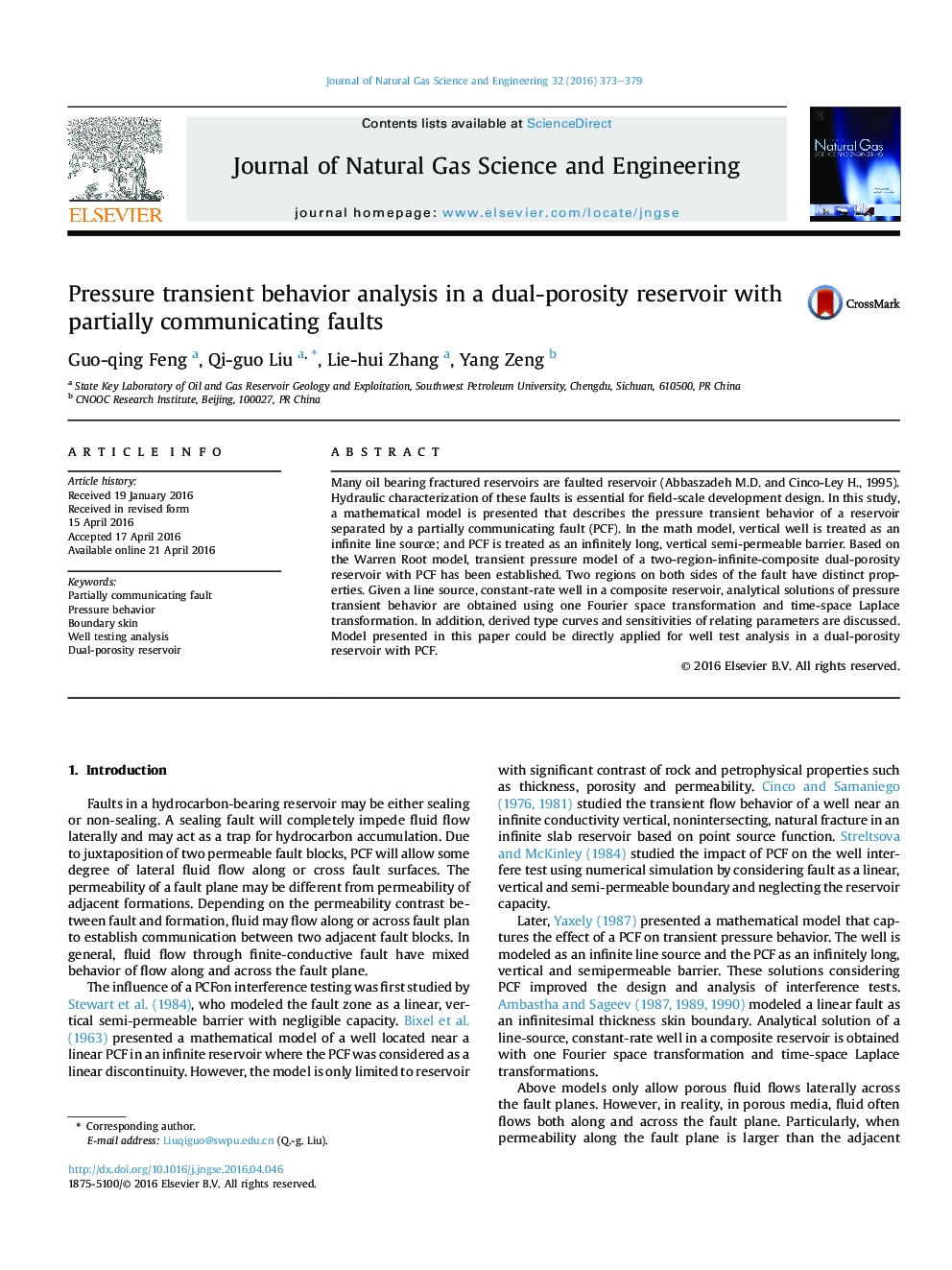| Article ID | Journal | Published Year | Pages | File Type |
|---|---|---|---|---|
| 1757238 | Journal of Natural Gas Science and Engineering | 2016 | 7 Pages |
•We model the effect of PCF on transient pressure behavior.•Analytical solutions for pressure transient behavior are obtained.•The boundary skin of fault affected the slope of derivative pressure curve.•λ affects the time when the dip of derivative curve appears.
Many oil bearing fractured reservoirs are faulted reservoir (Abbaszadeh M.D. and Cinco-Ley H., 1995). Hydraulic characterization of these faults is essential for field-scale development design. In this study, a mathematical model is presented that describes the pressure transient behavior of a reservoir separated by a partially communicating fault (PCF). In the math model, vertical well is treated as an infinite line source; and PCF is treated as an infinitely long, vertical semi-permeable barrier. Based on the Warren Root model, transient pressure model of a two-region-infinite-composite dual-porosity reservoir with PCF has been established. Two regions on both sides of the fault have distinct properties. Given a line source, constant-rate well in a composite reservoir, analytical solutions of pressure transient behavior are obtained using one Fourier space transformation and time-space Laplace transformation. In addition, derived type curves and sensitivities of relating parameters are discussed. Model presented in this paper could be directly applied for well test analysis in a dual-porosity reservoir with PCF.
